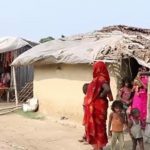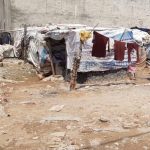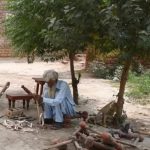Pakistan is located in South Asia and controls part of Kashmir. The nation was first founded in 1947 during the partition of India, leading to lasting tensions between the two countries. Due to an ethnic civil war in 1971, East Pakistan became the country of Bangladesh. Today, Pakistan is one of the most populated countries worldwide. It has a robust reputation, as well as cultural and religious history. The nation relies on many natural resources for economic growth. These include minerals and oils, as well as traditional textiles that are known worldwide. Even with natural resources, there is rising homelessness in the country. Here are seven realities of homelessness in Pakistan.




7 Realities of Homelessness in Pakistan
Currently, Pakistan is estimated to have a population of 220 million. With a growing population, the nation faces limitations to shelters and standards of living. The gap between those who are homeless and those living well off in urbanized areas only seems to be increasing. Researchers categorize 20 million people as being homeless in Pakistan. Statistics show that 35% of the total population live under the poverty line, while many barely stay above the poverty line. The conditions of homelessness in Pakistan disproportionately affect women and children because of malnutrition, healthcare and access to education.
Of the population that is without stable shelter, women and children are the most affected. While living in temporary housing and slums, the homeless population is not receiving proper nutritious food. This leads to health issues, especially for young children who don’t have access to proper healthcare. Additionally, women and children aren’t going to school because they spend their day finding short term work, protecting their shelter and selling goods on the street.
Over the past two decades, Pakistan has felt the effects of multiple natural disasters, from the lasting effects of an earthquake to yearly flooding. In 2005, northern Pakistan was dealing with the aftermath of a 7.6 magnitude earthquake, leaving 3.5 million people homeless, generating severe damage to the whole region. Even with the government’s help, many of those affected by the earthquake were left searching for employment and moving into temporary shelters/slums. Additionally, in 2010 Punjab felt the devastating effects of flooding that displaced at least 10 million people. Following the 2010 natural disaster UNCHR was quick to provide relief via materials for tents, food, etc. The region is still recovering from the damage and experiencing floods yearly. Damages from the floods sweep away temporary shelters, slums and require those without a home to constantly relocate.
In 2016, an official report by the Ministry of Planning, Development and Reform was released on multidimensional poverty being a factor in the poverty index, concluding that 39% of Pakistanis are living in multidimensional poverty. The percent has decreased over the past decade, but the progress is disproportionately effective from urban to rural regions. This index pertains to not only income and wealth but includes healthcare, education, living standards, etc. The report creates a path to understand how those in poverty may remain under the poverty line or become homeless due to outside factors. By creating these index factors, the government plans to help determine where the need lies for improvement throughout Pakistan.
The current prime minister of the country had led his campaign on bettering situations for those under the poverty line and creating adequate housing situations for those suffering from homelessness in Pakistan. The goal of his initiative ‘Panagah’ (shelter homes) is to create shelter for the homeless and those in poverty across the country. The initiative is still underway, with multiple shelters that have been built or bought. His plan describes a five-year timeline and the initiative was first accepted in 2018. But many regions are waiting for those promised accommodations for the homeless population to reach their regions of Pakistan.
FINCA is a nonprofit organization that is headquartered in the USA. The organization works on market-based solutions for people who are homeless or living in poverty internationally. Its work to uplift communities is prevalent in countries such as Pakistan with solutions provided from three categories: microfinance, social enterprise and research. As of recently, the organization has given small loans and savings accounts for 1,128,248 homeless/poverty clients to successfully create financial stability with reasonable and successful planning. Introduced to Pakistan in 2017, a mobile money platform called “SimSim” is an impactful tool for change. It allows quicker depositing, transfer and organization of money for those creating stable work for themselves. It has also provided donations to The Institute of Public Health in Punjab to help diagnose and combat COVID-19 via kits in poor communities. FINCA can be found in South Asia, Africa, Latin America, the Middle East and Eurasia. The organization works to aid families to become educated and create self-sustaining work for themselves and their communities.
- Save the Children is an international nonprofit organization that focuses on providing a healthy start and opportunity in life for vulnerable children. In Pakistan, the group supported children who were displaced during the natural disasters and conflicts of 2005 to 2010. The nonprofit’s goal is to provide shelter kits, food, education and medical aid to children for over 30 years. It works with local authorities to rebuild communities of poverty. Save the Children has rebuilt 102 schools and 181 temporary learning centers in Pakistan. The nonprofit also protects and supports the basic needs of over 600,000 children.
Even with an abundance of natural resources, Pakistan still suffers from a large homeless population. The country is working to better their living standards. Natural disasters and the poverty index are key to understanding the factors involved in the displacement of families living in poverty. These seven realities of homelessness in Pakistan bring context to the issue. They also highlight where the country and organizations are putting forth efforts for change.
